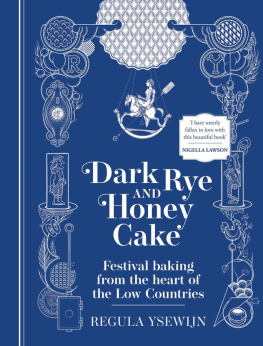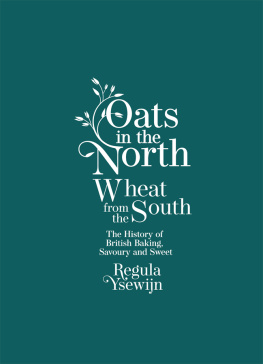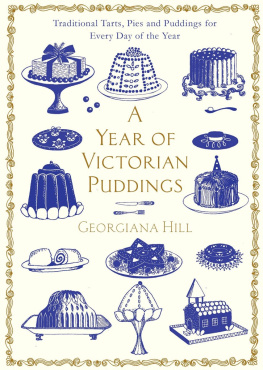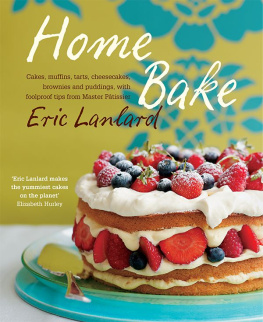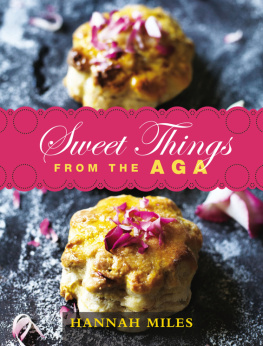Contents
Guide
NATIONAL TRUST
Book of
Puddings

NATIONAL TRUST
Book of
Puddings
Regula Ysewijn

Contents

Introduction

When the National Trust asked me to write this book, I was delighted. As an Anglophile Ive done extensive research into British food culture and history for the past 15 years and the iconic puddings in particular intrigued me to say the least. I dived into my centuries-old cookery books in search of what really constitutes a pudding. I savoured the forgotten flavour combinations, the creative use of spices, the harmony and the blurred line between sweet and savoury that defines the heritage of pudding.
When I put the word out that I wanted to hear about everyones favourites, pudding aficionados from all over the country and beyond contacted me about their much-loved desserts, often the ones they ate in school many years ago, or the ones their parents and grandparents used to serve. These 50 cockle-warming recipes were partly chosen by the many people who sent me their suggestions or pleas to search for a recipe long-lost but very much treasured in their memories.
Pudding is deeply rooted in the British psyche; it is part of what it means to be British and it has been that way for centuries. When the pudding cloth was invented in the fifteenth century meaning that puddings no longer needed to be boiled in animal innards there was scope for many new pudding recipes. By the seventeenth century a French visitor, Franois Maximilien Misson, noted the delights of pudding in his travel diary: Blessed be he that invented pudding, for it is a manna that hits the palates of all sorts of people; a manna better than that of the wilderness, because the people are never weary of it. Ah, what an excellent thing is an English pudding!
Roast beef accompanied by plum pudding became the national dish, and during the Napoleonic wars it was served as a statement of loyalty to the crown. At this time English and French cuisine could not be more different. French food culture was defined by intricate dishes while British food was straightforward, with an emphasis on products with the best provenance. In one satirical illustration of that time, entitled The Plumb-pudding in danger, British Prime Minister William Pitt and Napoleon are greedily carving up a steaming pudding representing the globe with fork and sabre Napoleon eagerly cutting off Europe, his eyes firmly on the prize.
In Victorian times a plum pudding became the icon of togetherness and family. It featured on the first printed Christmas cards, lovingly placed in the middle of a festive table. It was puddings for all in the nineteenth century. Plum duff and meat puddings ruled in the streets while impressive jellies and blancmanges entertained the elite. Techniques evolved in cooking as well as in the manufacturing of elaborate pudding moulds.
The Empire Marketing Board was founded in 1926 to promote Empire produce and trade, and in the winter of that year they distributed a recipe for Empire Pudding. The leaflet showed a powerful illustration of Lady Britannia holding a flaming plum pudding topped with a Union Jack. It read Buy Empire Goods Ask Is it British?.
You could show your patriotism with your pudding-making. Two world wars and years of rationing made it near-impossible to make the usual puddings at all. After the Second World War, traditional British puddings were replaced by French gateaux and other more dainty looking alternatives on the restaurant menus. Pudding became something you had at home or at school but not in a restaurant. The 1990s brought change, and with chefs like Gary Rhodes and Jamie Oliver, proper British puddings were something to be proud of again; more and more restaurants and gastropubs put pudding back on the menu. Today I cant imagine a day of walking in the British countryside without a warming sticky toffee apple pudding to restore my strength in a village pub. A British meal without a proper pudding is only half a meal in my book.
About the recipes

All spoon measurements are level, unless specified otherwise.
1 teaspoon = 5ml
1 tablespoon = 15ml
Eggs are medium, free range, organic if possible.
Milk is full fat (whole).
Butter is always unsalted unless specified otherwise.
Citrus fruit zest is always from unwaxed fruit, organic if possible.
Spices: please dont use that forgotten jar of cinnamon you found in the back of your cupboard; the flavour will disappoint you as the aroma of spices fades when they are old.
Oven temperatures are for conventional ovens. If you use a fan oven you may need to reduce the temperature by 10C.
Bake on the middle shelf of the oven unless specified otherwise.
It is not always safe to eat uncooked eggs; this applies to the very young, the elderly, pregnant women, and anyone who is ill or has a weak immune system. When a meringue is not baked in the oven the recipe calls for pasteurised egg whites, which you can buy in some supermarkets and health food shops. Alternatively youll need to make an Italian meringue, using a sugar syrup to cook the egg whites. To make a sugar syrup for a meringue with 5 egg whites, combine 300g of caster sugar and 80g of water in a saucepan; put a sugar thermometer in the pan and heat to 110C then reduce the heat and let it bubble gently until the temperature goes up to 120C. Meanwhile, whisk your egg whites to stiff peaks in a stand mixer. Start adding the syrup to the egg whites while continuously whisking on a low speed. When all the syrup is in, leave the mixer beating at a low speed for a further 5 minutes until thick and glossy.

How to cook a pudding

The earliest puddings were made in bag-like animal stomachs or intestines, just as haggis and some sausages are today. From stomach to the stuffed uterus popular in Roman cooking, if you could stuff it, it was stuffed with meat or offal, grains and dried fruits. Sweet herbs were used as flavouring; I am sure that to our medieval ancestors a pudding was so special because it had sweet notes during a time when sugar was almost unobtainable.
The pudding cloth first appeared in the fifteenth century; as a result pudding-making became possible outside slaughter time, and puddings became more popular. An array of meatless puddings was born. By the eighteenth century, pudding chapters in books were extensive, with recipes both sweet and savoury. Some form of pudding was eaten with every course of the meal.


